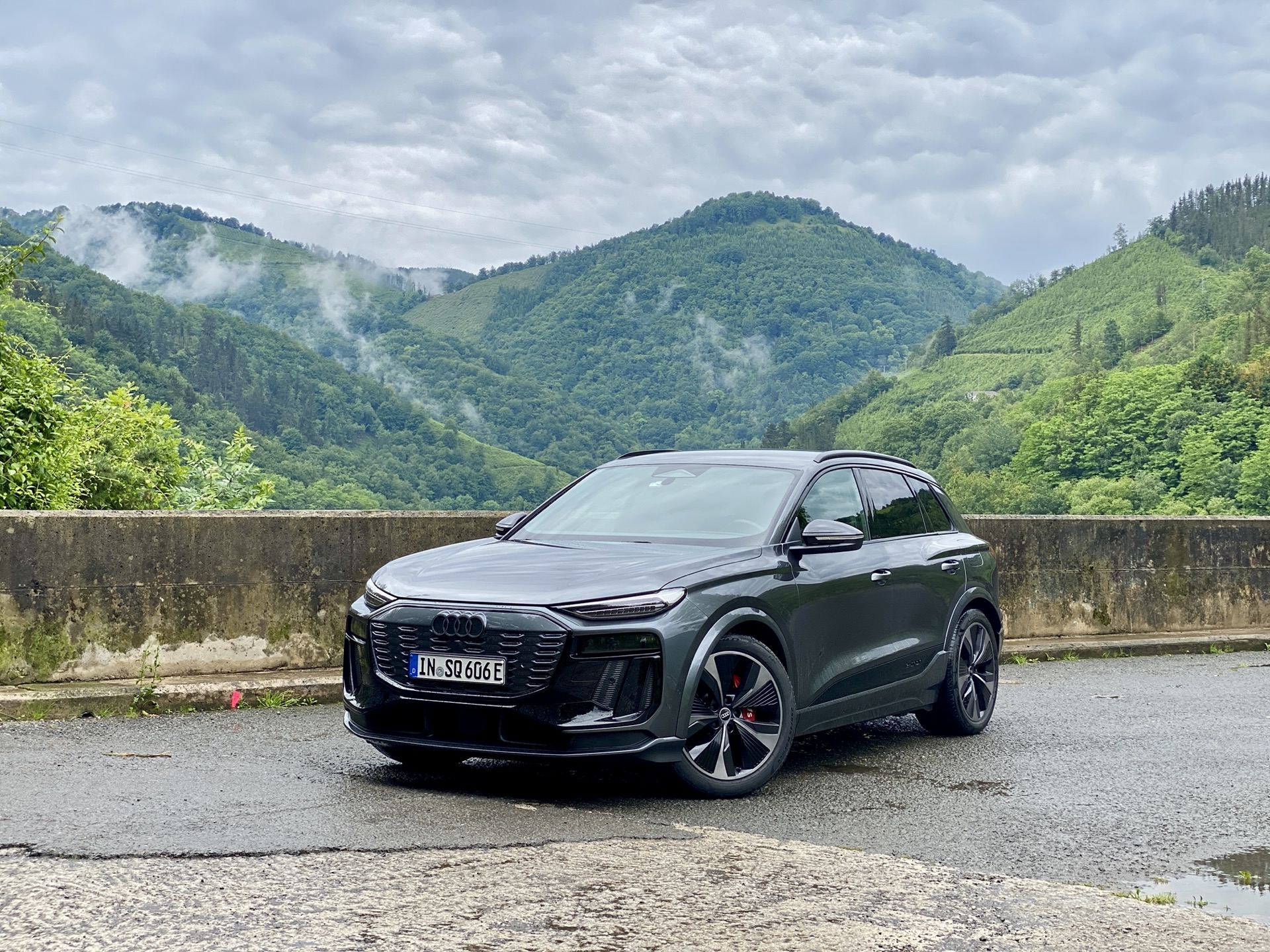- 2025 Audi SQ6 E-Tron goes on sale in November for about $15,000 less than the Porsche Macan EV
- Audi’s PPE architecture has more efficient and powerful motors than other SUV E-Trons
- SQ6 E-Tron benefits from an available air suspension with adaptive dampers
An underground parking garage below the cobblestone streets of San Sebastian, Spain’s old town might be an unlikely place to detail the cutting-edge technology underpinning Audi’s evolutionary electric vehicle platform. With concrete pillars as stout as a Gothic basilica, parking spots no wider than a Lancia hatchback, and convoluted exits so narrow that even Moped riders exit in single file, the new 2025 Audi Q6 E-Tron SUV stuck out like…an American.
It didn’t fit around this Bay of Biscay beach town, founded centuries before the internal combustion engine or electricity. Yet Audi’s technological showcase proved that it can coexist with the old world as the modern world plunges irrevocably into the future.
The side mirrors power retracted, the parking sensors cried like robots being tortured, and front and rear camera projections on the 14.9-inch touchscreen display assured me that with enough finagling, I could return without issue from ditching Audi’s prescribed route.
At nearly 188 inches long, the new 2025 SQ6 and Q6 are huge by urban European city standards, but sized just right when the midsize crossover SUV lands in November in North America’s most popular luxury car segment. Even though it was made in and tested in Europe, this modern SUV casts an American net, where the German brand sells about 40% of all its global vehicles.
It should be no surprise that the five-seat crossover SUV measures up to the benchmarked bestselling Tesla Model Y. Yet in build quality and composure it’s lightyears ahead, and the in-car technology leaps past Tesla as well.
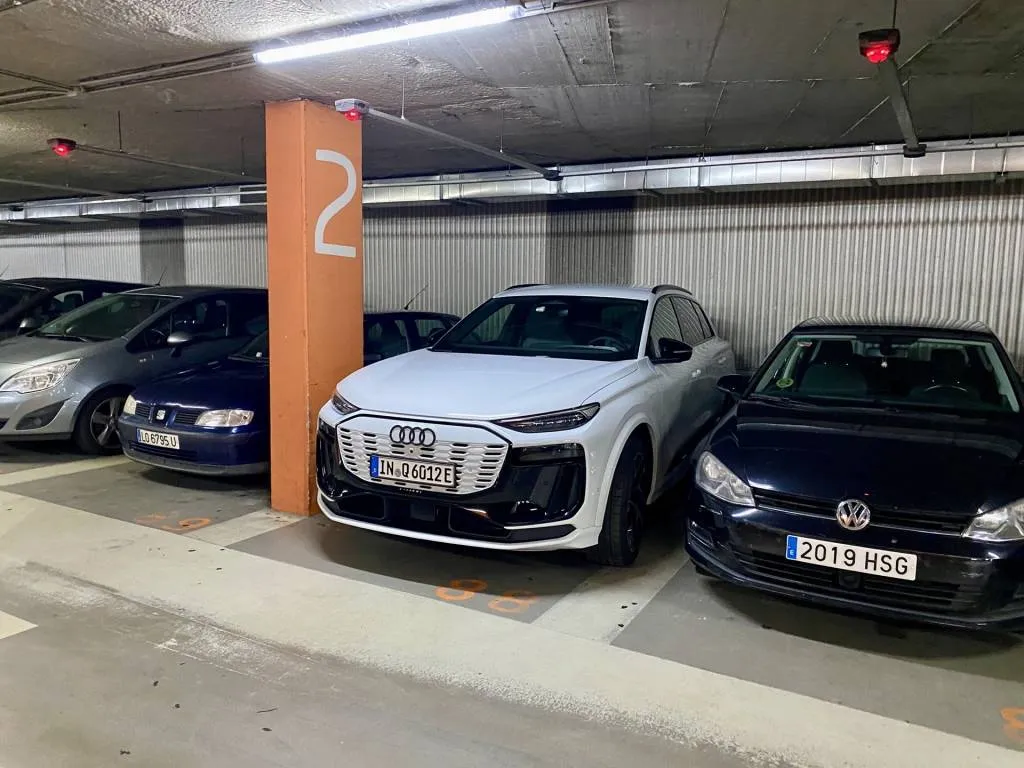
2025 Audi Q6 E-Tron
Audi Q6 and the PPE (Premium Platform Electric)
The new Q6 utilizes the brand’s PPE (Premium Platform Electric) architecture that not only underpins the related Porsche Macan EV but will be rolled out in the RS Q6 and the A6 electric sedan arriving next year. (Editor’s note: If Audi taxonomy confounds you during the transition, know that every even-numbered Audi from here on out will be a battery electric vehicle, and the odd-numbered models will use combustion engines.)
A standard dual-motor all-wheel-drive system will be used on a host of forthcoming vehicles based on the PPE. Driving both around the hilly roads in northern Spain’s Basque Country impressed me with their balance of power, efficiency, and comfort, and made me forget about the forgettable Q4 E-Tron and the underwhelming Q8 E-Tron.
Audi employs a 140-kw induction motor on the front axle that helps with takeoff and supplements heavy power demands, but when cruising it virtually decouples, or spins freely, so the 280-kw permanent magnet synchronous motor in back serves as the main propulsion unit. The more compact motors weigh less and requires about 30% less installation space than the motors used in the Q4 and Q8. The new motor designs have more efficiency and about half of the friction losses versus the last-gen motors.
The lighter weight motors and other efficiencies in the platform help keep the Q6’s weight in check at about 5,300 pounds, which is about 300 pounds heavier than a Q7 but 500 pounds lighter than the larger Q8 E-Tron. Point being, the second-generation electric platform’s diet is working.
The Q6 E-Tron generates up to 456 hp and a 0-60 mph time of 4.9 seconds, while the SQ6 E-Tron generates up to 509 hp and a 0-60 mph time of 4.1 seconds. The torque breaks down to 203 lb-ft from the induction motor and 428 lb-ft from the tightly wound rear motor.
While both have launch control (press brake, floor accelerator, let off brake), the SQ6 packs more of a gut punch, but it’s nothing too abrupt. It’s more of an immediate, expected acceleration. The five drive modes lend more nuance to the driving experience. Dynamic has a firm pedal response versus the mushy response in Efficiency, and each mode affects the steering response as well.
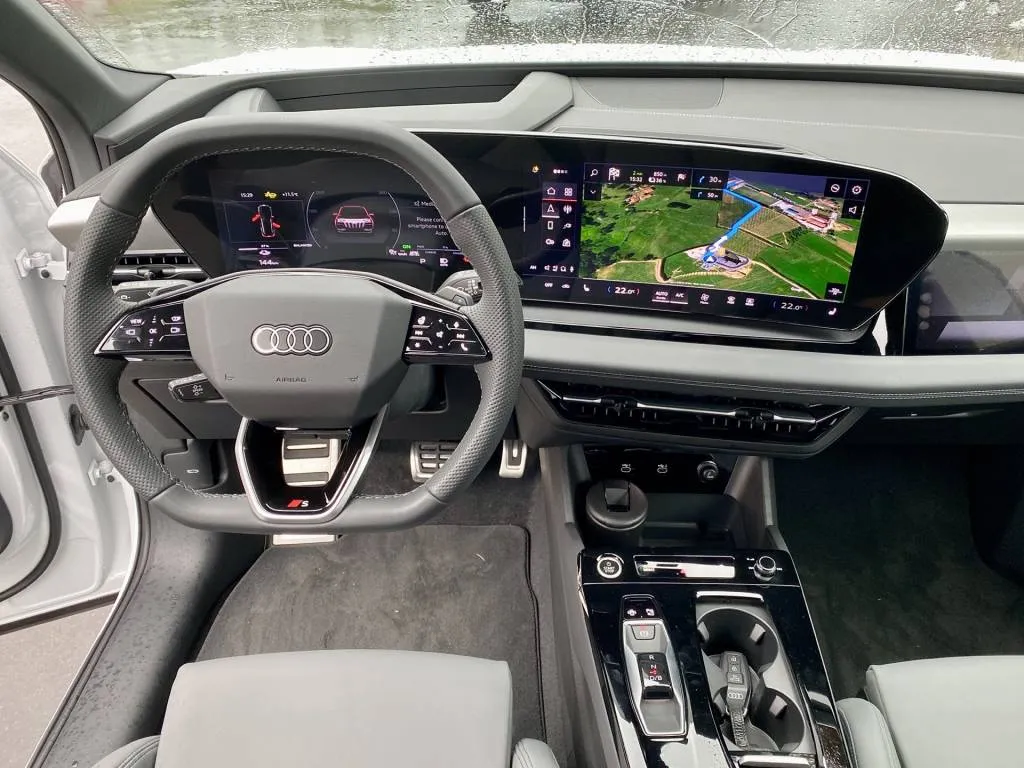
2025 Audi SQ6 E-Tron
One of the more pleasant surprises from the SQ6 was a new steering rack that’s connected to the subframe. It has fewer rubber elements and less elasticity, Audi engineers told me. Whatever the case, there’s a more direct connection to the road. In the tightness of the parking garage, there was all kinds of resistance so I could better negotiate the millimeters I had to work with, whereas on the winding hilly roads slight inputs result in significant feedback.
The drive modes also alter the optional suspension as well. Both models will arrive in the States with steel springs and passive dampers within a five-link independent suspension, but both Q6 and SQ6 models I’m testing have adjustable adaptive dampers and an air suspension that alters the ride height by about 2.5 inches total.
Audi doesn’t have U.S.-spec ground clearance at press time, but it looks and feels lower than eight inches. Off-road mode raises it about 1.3 inches but I wouldn’t use it for anything more than getting out of mucky situations on an access road. Efficiency mode lowers it 1.2 inches from Comfort for optimal cruising range, Dynamic lowers it 0.8 inch, and an Individual mode lets you play with all the things, including shutting off the fake noise and adjusting the myriad safety systems.
With its thicker antiroll bars and stiffer sidewalls on its 285/40R21 summer tires, the SQ6 suffers less squish in turns than the Q6, and overall handles with more agility than its 5,300-pound curb weight would suggest. Audi also claps on 6-piston calipers for more bite on the front brakes, but in most cases, the Q6 models don’t use the friction brakes all that much.
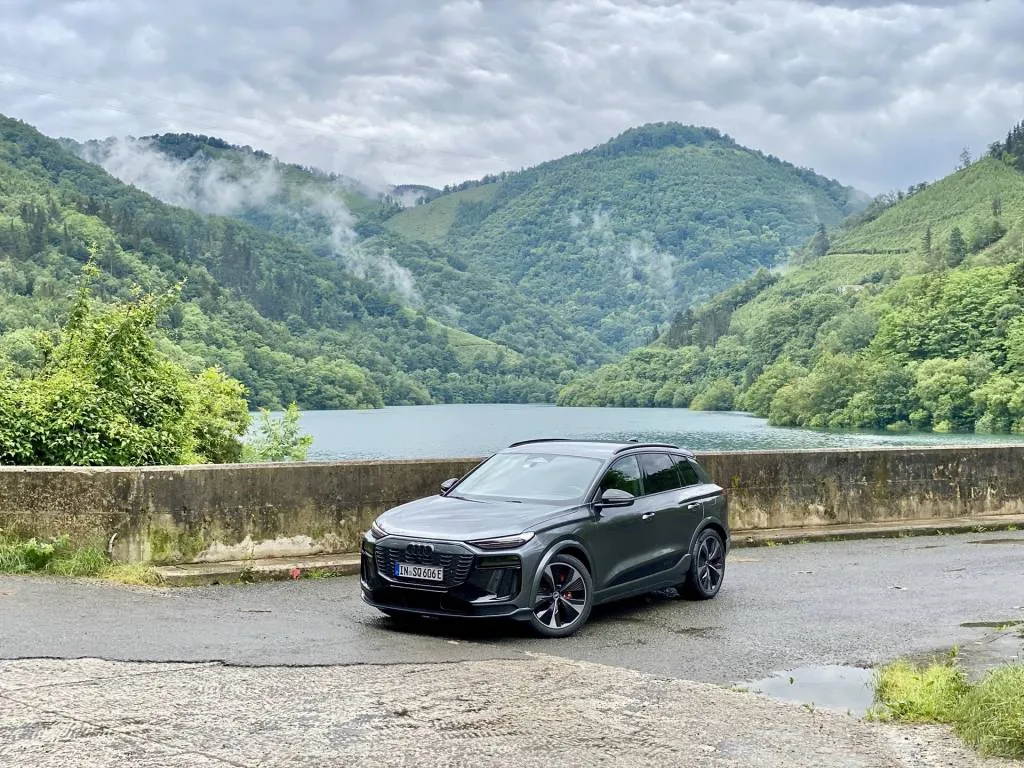
Audi’s latest regenerative braking system
Audi says that 95% of the braking in the Q6 models is handled by the motors, which can capture up to 0.25 g of deceleration. Even when you press down on the brake, it’s using both motors to slow down the car first before the friction brakes get called to action. Audi offers up to five regen brake settings that cast the widest net over possible EV adopters. I prefer “B” mode in the console gear selector. It enables one-pedal driving where stopping is a matter of feathering the accelerator. Once at a full stop, it doesn’t creep forward.
My co-driver didn’t like the abruptness of it. We both played with the paddle shifters that adjust to three levels of braking, with the lowest setting effectively replicating a coast mode like in a gas car. In this setting, my co-driver commented on the lack of initial bite from the pedal then too much bite at about halfway through the pedal travel. I found it predictable enough, though it may take some adjustment. Most owners will find their desired setting of the four options and leave it, or maybe they’ll opt for Auto mode that modulates regen braking from the camera system reading the road and traffic ahead.
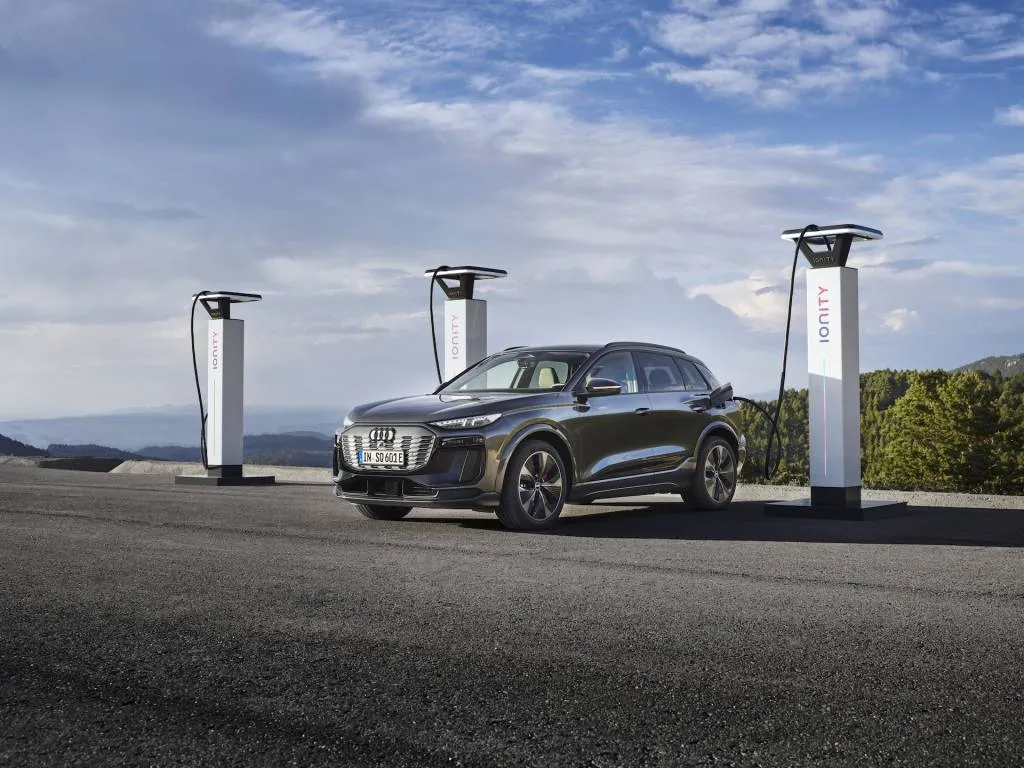
Audi Q6’s 100-kwh battery pack and 800-volt architecture
The SQ6 also handles more like a wagon than an SUV due to the low-set 100-kwh battery pack made up of 12 modules of 15 prismatic cells each. It sits 5.9 inches tall in the low floor between the axles, and the more energy-dense nickel-cobalt-manganese lithium-ion battery cells are optimized for a usable 94.4 kwh, so Audi’s not holding anything back.
The PPE’s 800-volt system accepts a DC fast-charge of up to 270 kw, if you can find a public charger pumping electrons at that rate. We don’t have to charge it, but Audi estimates a 10-80% state-of-charge in 21 minutes, or, during the first 10 minutes of charge at that rate it could recoup nearly 135 miles of range. That’s fast.
Owners can use Plug & Charge at Electrify America stations that automatically connect to your account, so you don’t need to swipe a card. Even at an EA station rated at 135 kw, the 800-volt charging system virtually splits into twin 400-volt circuits that can charge in parallel in 35 minutes.
At home, on a 40-amp 240-volt AC circuit, the Q6 E-Tron’s 9.6-kw onboard charger fills the battery in about 10 hours. Audi says a 19.2-kw onboard charger will be made available at a later date, and when connected to an 80-amp, 240-volt circuit, it should cut the home charge time in half.
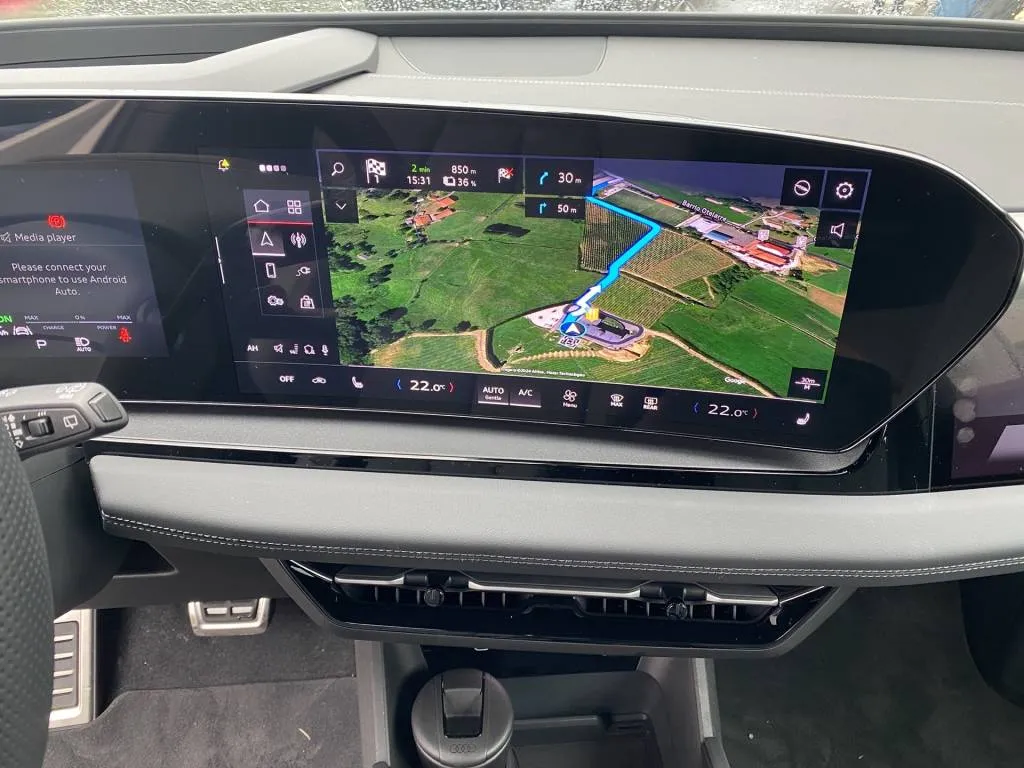
2025 Audi SQ6 E-Tron
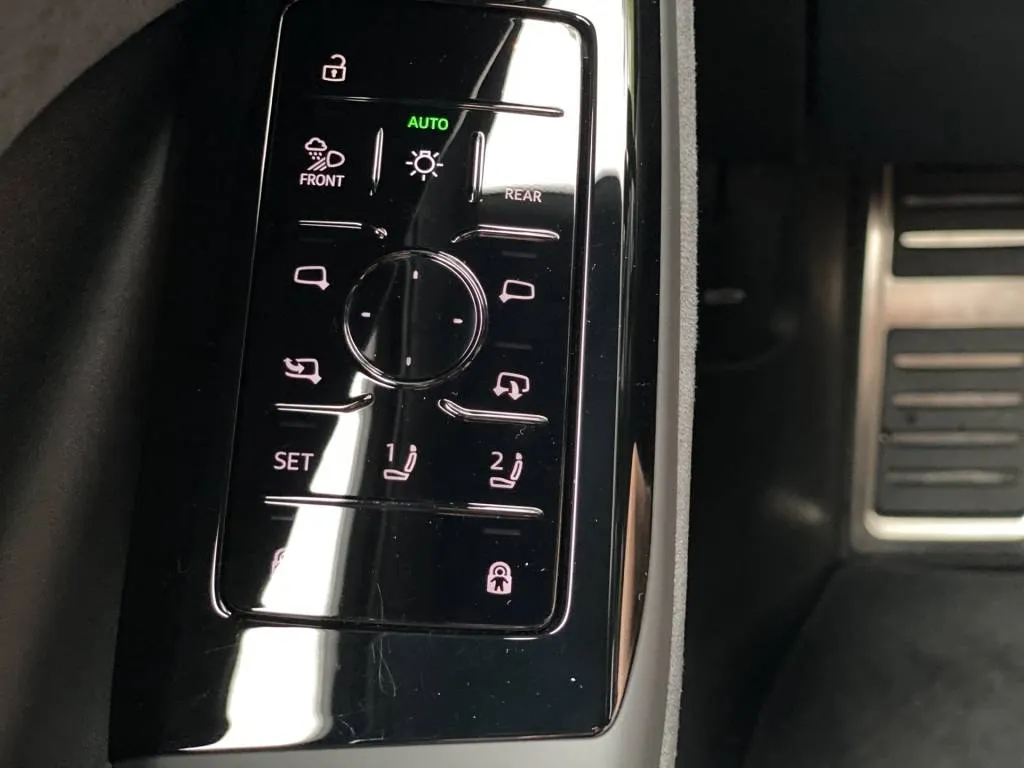
2025 Audi SQ6 E-Tron
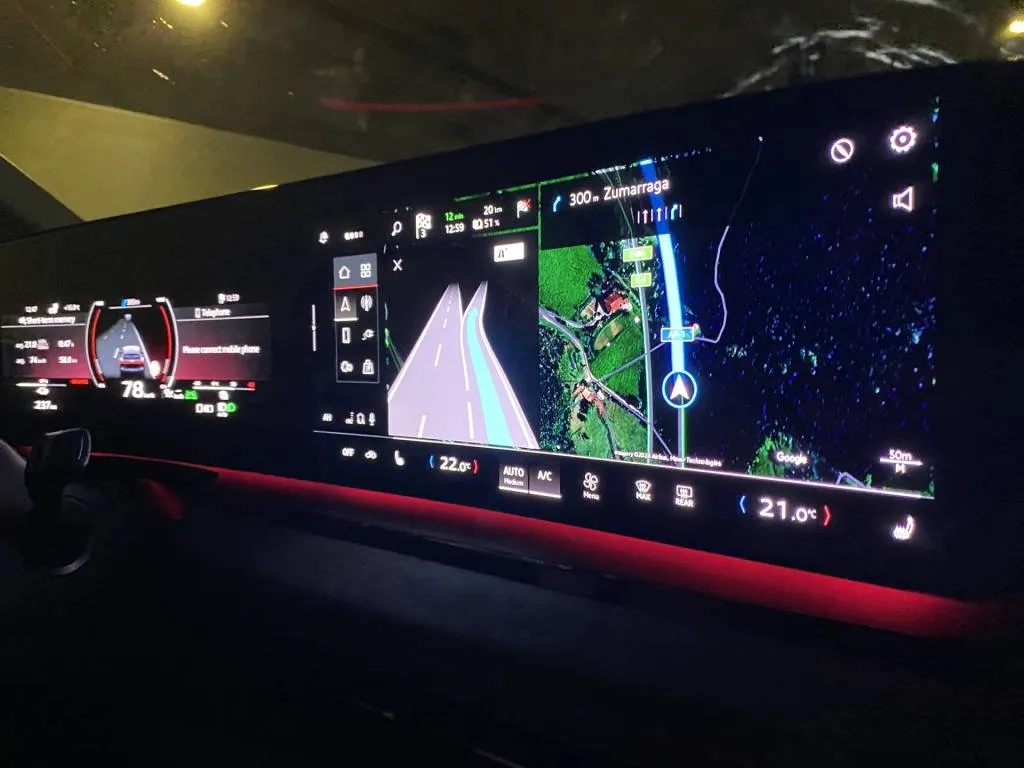
2025 Audi SQ6 E-Tron
Audi Q6 augments the digital interface with ChatGPT-enabled voice commands
All of the electromechanical wizardry happening under the skin of the Audi Q6 and SQ6 is hinted at by the stage of screens on the dash and the light show surrounding it. The North American market won’t get the eight customizable headlight and taillight signatures that include an indicator light that can pulse or dilate sequentially.
The Q6 has a 14.5-inch touchscreen to accompany its 11.9-inch digital gauge cluster, and it runs Audi’s latest infotainment system. A passenger touchscreen of 10.9 inches that’s unreadable by the driver allows the passenger to act as navigator. It’s less intrusively integrated into the dash than in many luxury rivals (See: Mercedes-Benz Hyperscreen).
Wireless Apple CarPlay and Android Auto are included, but the voice recognition system is now augmented by ChatGPT that can not only process up to 800 vehicle commands (such as “Put down the passenger window”), according to Audi, but it can also learn to answer general interest questions such as, “What’s the best pintxos place around here?”
Our brief testing in a German car driven on Spanish roads spoken to by Americans had predictably mixed results. Still the shift away from the touch interface was a welcome one. The neatest trick was it could tell when the driver or passenger are speaking, and ignore the passenger, or at least not let them turn off lane control. If only we could do the same to back-seat drivers.
Most of the interior light show mixed visual awe with safety. A light bar made of 84 LEDs spanning the dash at the cowl gave navigational cues at approaching turns. For example, its right half illuminated green at an oncoming right turn. It was discrete and helpful, especially if you prefer to shut off voice commands, and if you’re wearing polarized sunglasses that dim some of the head-up display.
Standard driver-assist and safety systems include automatic emergency braking with pedestrian and cyclist detection at the front and rear, blind-spot monitors, adaptive cruise control, automatic high beams, a driver-attention monitor, and a rear-seat reminder. It’s a lot to keep track of, but most settings can be changed and it takes only a couple of hours to get used to it.
One of the cooler available features was the upgraded Bang & Olufsen sound system with four speakers integrated into the front headrests. With navigation commands active, they sounded in the driver’s headrest speakers without interrupting the music to the rest of the car.
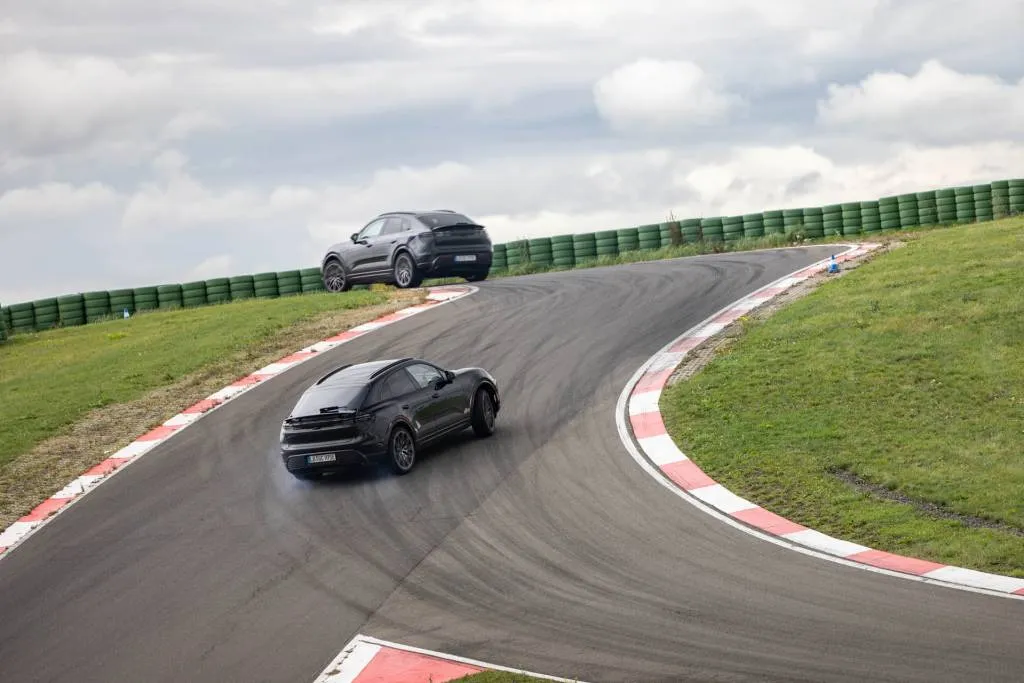
Porsche Macan EV
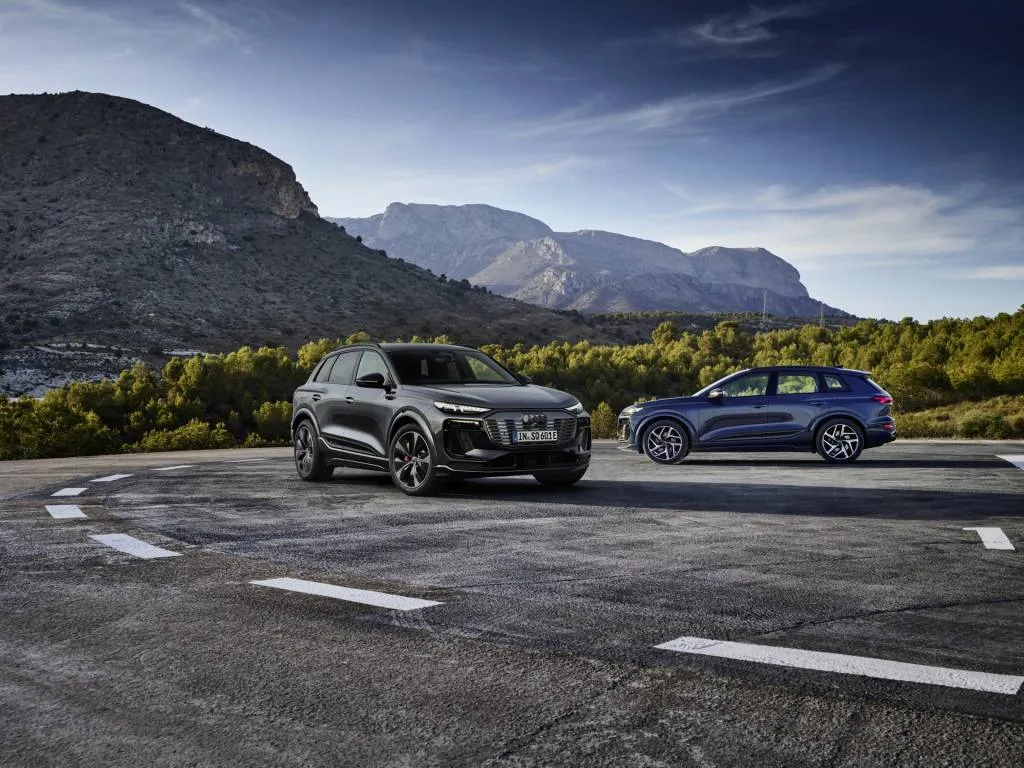
2025 Audi SQ6 E-Tron, left, Q6 E-Tron, right
The $15,000 SQ6 question
Questions remain, specifically regarding price. Audi reps said the 2025 Q6 will cost about $15,000 less than the $82,000 Porsche Macan EV. Considering that other SQ SUV models cost anywhere from $15,000-$20,000 more than the base model, the SQ6 will likely cost slightly more than the base Macan EV. It’s hard to recommend either the Q6 or the SQ6 E-Trons without prices.
What’s certain is that the Q6 E-Tron, the SQ6 E-Tron, and the PPE platform mark an evolutionary step for the brand’s electric vehicles. The SQ6 E-Tron represents the best volume electric car Audi sells here (with fond exception to the GT E-Tron), making the Q4 E-Tron and to a lesser extent the Q8 E-Tron seem like USB-A in a USB-C world. The new Q6 E-Tron is a proper luxury electric SUV that shines the light forward, even underground.
Audi paid for airfare and lodging for Motor Authority to present this firsthand report.
